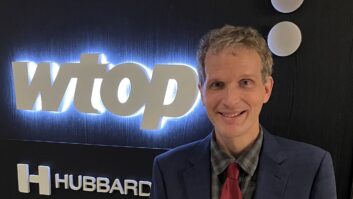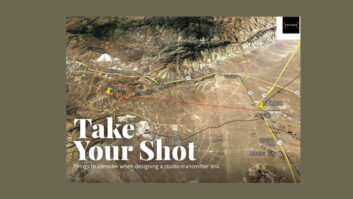The FCC’s latest report on digital radio is interesting reading, a concise summary of IBOC’s regulatory history and of issues likely yet to be contentious, such as subscription services, new public interest obligations and digital copying limitations.
The commission’s action is summarized in our story on page 1 of this issue, and you can peruse the order at radioworld.com. I recommend it.
Reading the document, however, also brought to my mind the original, powerful reasons broadcasters pursued this particular technology. These factors tend to be forgotten or taken for granted during debate over various rollout questions that occupy discussion at conventions, on listservs and in news stories.
It’s timely to recall them now.
Among the various ways to “go digital,” IBOC appealed to broadcasters because our industry essentially is conservative in its business outlook. We are hesitant to leap into new arenas if such a leap would put our existing “turf” at risk.
One can argue whether and when such a cautious outlook is appropriate; but in such an environment, HD Radio emerges as a custom-fit solution for bringing the radio industry into the digital age. This approach truly is elegant, allowing a broadcaster to ease into a significant new service with no fear of giving up existing spectrum.
Think of the discussions we’d be having right now if radio’s digital road map involved a mandated move to new frequencies and surrender of existing channels, all on a government-set schedule. In the middle of such a transition, HD Radio would look pretty darned good.
You’d wish for a rollout that allowed you to create profitable new information services on your existing bandwidth, without having to obtain separate permission each time you added a program stream, in data increments that you determined, on a timetable that you set and at a pace with which you were comfortable.
You could add new streams when you conceived them; and you could explore the transmission of new data and audio services within the relatively protected confines of your existing broadcast infrastructure.
That opportunity exists now.
I know this sounds like a sell job. But I continue to be a cautious IBOC proponent, not a gung-ho advocate.
I am perfectly aware that some readers wish the question of the digital transition would just go away. They cite concerns about cost, interference or the perception that they’re being dragged into it by bigger corporate entities.
I respect those who feel this way but as I’ve stated before, I believe the HD Radio IBOC solution that our industry has developed, while imperfect, is the best available and, further, it’s foolish to ignore the benefits it does provide.
Let’s not lose sight of the growth of our digital forest while we fret about individual trees.
Among IBOC critics, the most paranoid sometimes say that big corporations, plotting with the commission and the NRSC, are forcing our industry into change. Ignore them. I know too many of the good people who have struggled with these decisions — including most of our industry’s leading engineers — to fall into such an easy delusion.
But if anything, the new IBOC rules do protect, rather than infringe, the interests of broadcasters, a group that mostly wants to transition to digital but at their own speed and in their own way.
Medium- and small-market broadcast managers lately are being pitched the benefits of HD Radio; they should listen with an open mind. In the language of the investment community, stations are being offered a chance to move into the digital age with real profit potential in the near term, a solid long-term outlook and very little downside risk other than hardware costs — and those expenses can be incurred on their own timetable.
(Also note that over time, the FCC said, it could reconsider its stance that stations must simulcast their main digital and analog signals. This means you could air separate HD Radio and analog feeds. That’s more potential competition in your market looming. Who wouldn’t want a part of that?
The commission order also makes clear that its staff is thinking about an all-digital future. Some industry leaders have said they’ll never turn off their analog; I wouldn’t put money on that.)
Meanwhile, tuners are proliferating today. Multicast channels are being added; and it’s my prediction that soon one will “break out” into national consciousness with an unexpected format or personality, one that will help create the consumer “buzz” HD Radio craves.
Many new-media companies would kill to have the regulatory certainty and coordinated marketing among competitors that radio enjoys in this transition. You need not be a Clear Channel or CBS to benefit from this extended opportunity to manage and experiment with new digital services. Take advantage of it.












